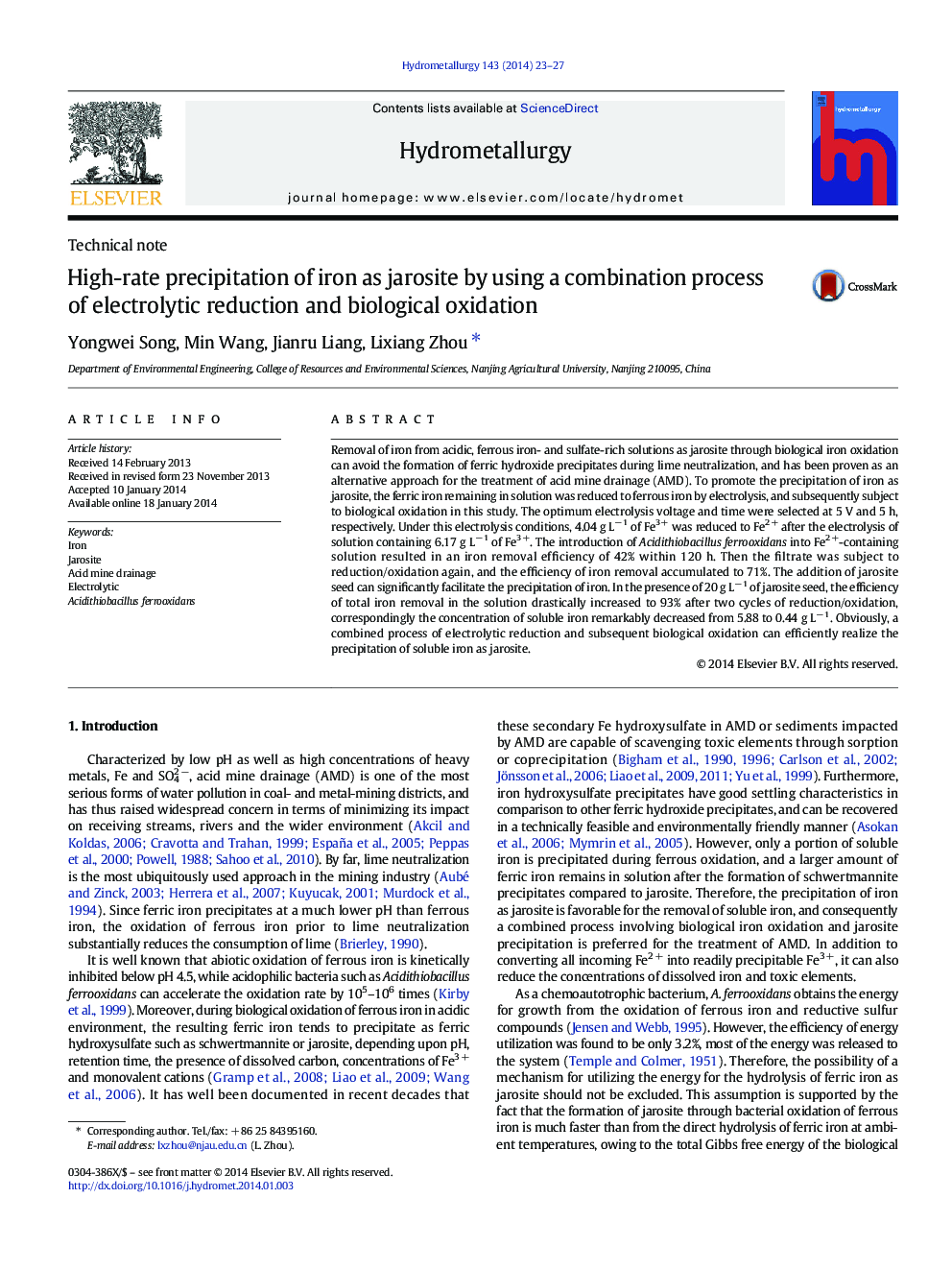| Article ID | Journal | Published Year | Pages | File Type |
|---|---|---|---|---|
| 212285 | Hydrometallurgy | 2014 | 5 Pages |
•Iron was removed from acid sulfate solutions by electrolytic reduction/biooxidation.•Without seed, 71% of iron was removed after the second cycle of reduction/oxidation.•While in the presence of jarosite seed, iron removal efficiency reached up to 93%.
Removal of iron from acidic, ferrous iron- and sulfate-rich solutions as jarosite through biological iron oxidation can avoid the formation of ferric hydroxide precipitates during lime neutralization, and has been proven as an alternative approach for the treatment of acid mine drainage (AMD). To promote the precipitation of iron as jarosite, the ferric iron remaining in solution was reduced to ferrous iron by electrolysis, and subsequently subject to biological oxidation in this study. The optimum electrolysis voltage and time were selected at 5 V and 5 h, respectively. Under this electrolysis conditions, 4.04 g L− 1 of Fe3 + was reduced to Fe2 + after the electrolysis of solution containing 6.17 g L− 1 of Fe3 +. The introduction of Acidithiobacillus ferrooxidans into Fe2 +-containing solution resulted in an iron removal efficiency of 42% within 120 h. Then the filtrate was subject to reduction/oxidation again, and the efficiency of iron removal accumulated to 71%. The addition of jarosite seed can significantly facilitate the precipitation of iron. In the presence of 20 g L− 1 of jarosite seed, the efficiency of total iron removal in the solution drastically increased to 93% after two cycles of reduction/oxidation, correspondingly the concentration of soluble iron remarkably decreased from 5.88 to 0.44 g L− 1. Obviously, a combined process of electrolytic reduction and subsequent biological oxidation can efficiently realize the precipitation of soluble iron as jarosite.
